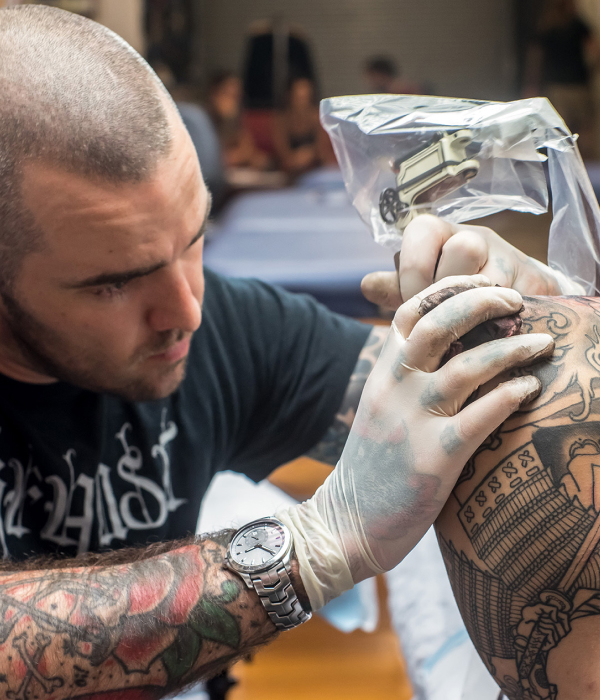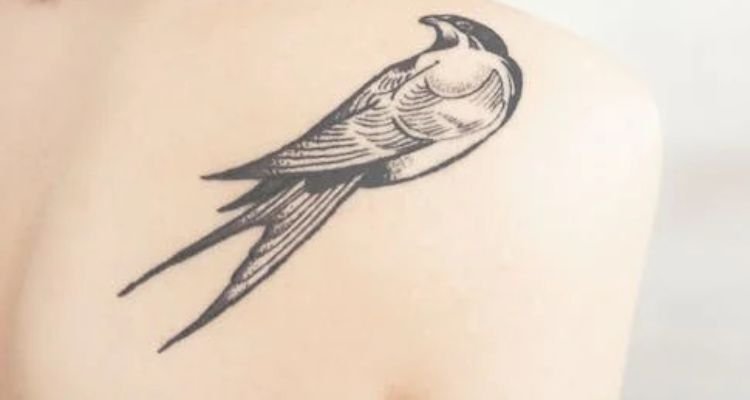Embarking on a journey to get a tattoo can be both thrilling and daunting. It is important to choose the right design because it is an artistic expression that will be permanently imprinted on your body. Learn how to design your tattoos with precision and creativity to ensure your ink reflects your unique style.
how to design a tattoo
Understand tattoo styles
First, understand the different tattoo styles available. Popular styles include portrait, black and gray, horror, trash polka, and lettering and script tattoos. Each style has its own characteristics and charm.
- Portrait: Perfect for commemorating a person or depicting a symbolic figure. It takes a skilled artist to recreate the authentic look.
- black and gray: Known for its evocative and sometimes spooky themes, this style uses black ink and water to create shadows and contrast.
- Horror: For those interested in dark or morbid themes, such as horror movie characters or creepy imagery.
- Trash polka: Featuring a black and red color scheme, this new style combines realism, lettering and abstract shapes.
- Lettering or script: They range from simple word tattoos to highly stylized pieces where the words become part of the artistic expression.
find ink inspiration
Finding the perfect inspiration for your tattoo is a very personal journey, it should resonate with your interests, experiences, and aesthetics. Here’s how to approach this creative process.
1. Reflect on your interests and passions
Tattoos are a great way to express your hobbies and passions. They can be symbols that represent very important aspects of your life.
For example, a musician might consider a tattoo of their favorite musical instrument, while an avid traveler might choose a design that represents their love of exploration.
2. Remember special experiences
Tattoos serve as a permanent reminder of important life events and experiences. Whether it’s a landmark from a memorable trip, a symbol commemorating an important accomplishment, or an artwork that reminds you of a particular time in your life, these designs are a way to keep those memories close to you.
3. Beautiful appearance
Sometimes inspiration for a tattoo comes purely from a design that you find beautiful or interesting. It doesn’t necessarily have to be deeply meaningful. It could simply be a pattern, shape, or color palette that you find visually pleasing.
4. Considerations for your first tattoo
for them get your first tattoo, it’s often best to start small and choose areas that are less painful, such as your forearms, outside shoulders, and upper back. Not only are these areas less uncomfortable, but they’re also great for showing off a smaller, simpler design.
5. Personalized design
flowers of your birth month, signyou can add unique and meaningful touches.
Each birth month has a specific flower associated with it, making it a very personal and symbolic tattoo. Similarly, your zodiac sign can reflect your personality traits, making it a popular choice for those who feel a strong connection to astrological symbols.
6. Seek expert guidance
Once you have a rough idea, consulting a professional tattoo artist can help you refine your concept. They offer insight on how to translate your ideas into stunning designs that work well with body contours and skin tones.
If you want more creative guidance on what to draw or choosing a tattoo, What should I draw? Quiz about Brainfall. This is a fun and insightful way to explore different ideas and inspiration.
Your tattoo is a piece of art that represents part of your story, so make it something you’ll be proud to wear for years to come.
Size, placement, and body real estate
The size and location of your tattoo are just as important as the design itself. The size of the tattoo influences the level of detail it can include and determines its appropriate location on the body.
The larger design is suitable for larger areas such as the back and thighs, allowing for more intricate work. However, small tattoos are flexible in placement and can be inked in areas such as the wrist, ankle, or behind the ear.
Consider the visibility and personal significance of your tattoo placement. Do you want it to stand out or be more subtle?
Some areas of the body are more sensitive to pain than others. Meaty areas such as the thighs and upper arms typically experience less discomfort than bony areas such as the ankles and ribs.
To color or not to paint
The color of your tattoo and your choice of black and gray can have a huge impact on the overall look of your design.
Black and gray tattoos are known for their classic and timeless look and can be used to suit a variety of skin tones. These tattoos are perfect for styles that rely heavily on shading and texture, such as realism and portraiture.
Colored tattoos, on the other hand, can add vibrancy and bring a different dimension to your artwork.
These are especially effective for new school, watercolor, traditional styles, etc. When considering color, it’s important to think about your skin’s undertone, as it can affect how the color looks after healing.
consult an expert

Choosing the right tattoo artist This is an important step in your tattoo journey. We recommend researching and visiting different tattoo parlors, evaluating artists’ portfolios, and finding someone whose vision and style match yours.
Effective communication is key. Be open to the artist’s suggestions, but also be clear about what you want. A skilled artist will provide valuable input on how to best adapt the design to your body contours and skin tone.
tattoo care
Aftercare is very important to maintain the longevity and appearance of your tattoo. Proper care begins immediately after inking, and it’s important to follow the artist’s instructions.
This includes keeping your tattoo clean, applying recommended ointments and moisturizers, and avoiding sun exposure. Over time, tattoos can fade or blur, so touch-ups may be necessary to keep the design crisp and vibrant.
Each tattoo is a unique self-expression, and these considerations will ensure that your ink not only looks beautiful when you first get it, but remains a source of pride for years to come. Masu.
summary
Creating the perfect tattoo design requires a combination of personal inspiration, style, and practical considerations. Be creative, consult experts, and take your time. Tattoos are more than just body art. It’s a personal statement that will stay in your heart forever.
Remember that the journey to finding the perfect tattoo design is personal and unique to each person. I hope you find a happy tattoo and a design that you can cherish for a lifetime.
Please follow and like:
